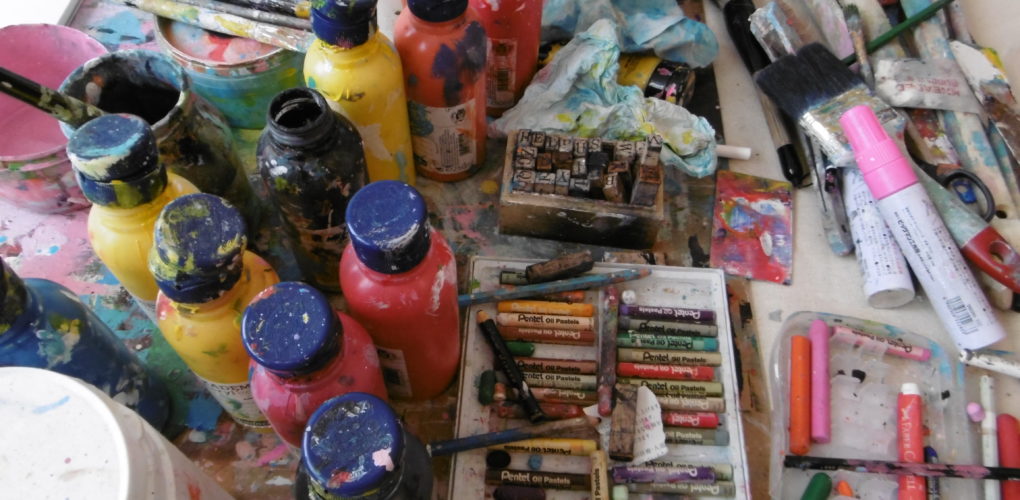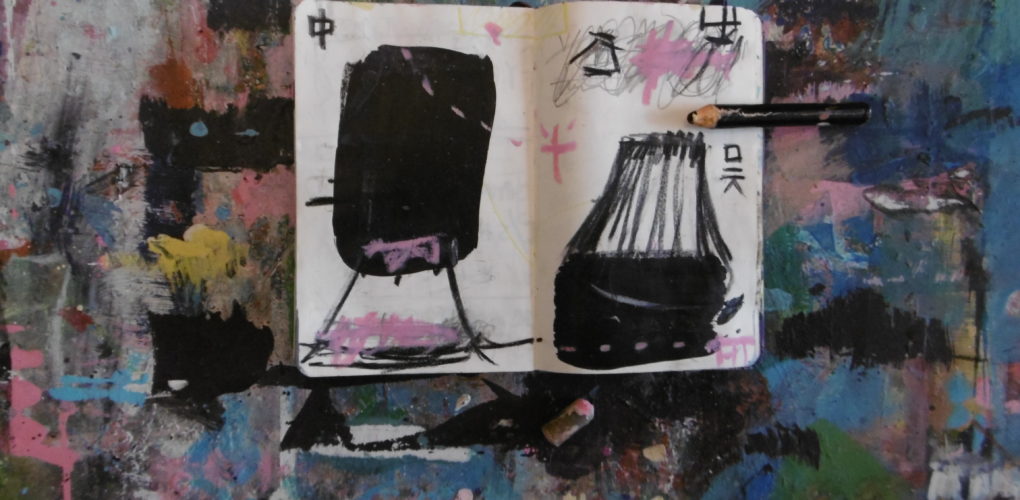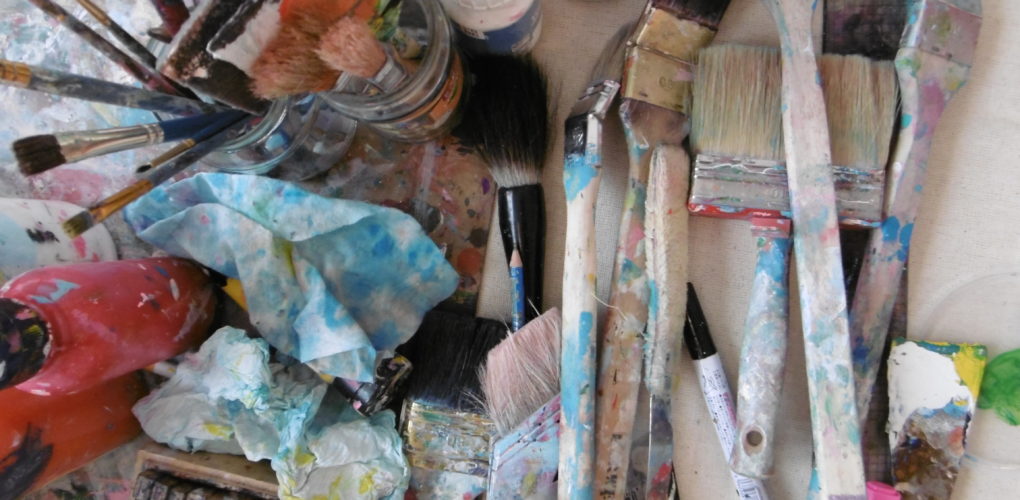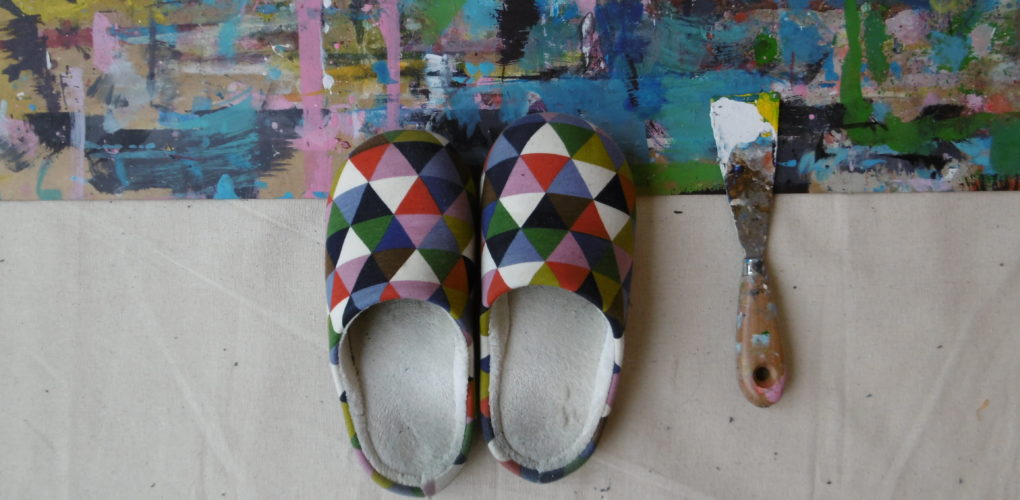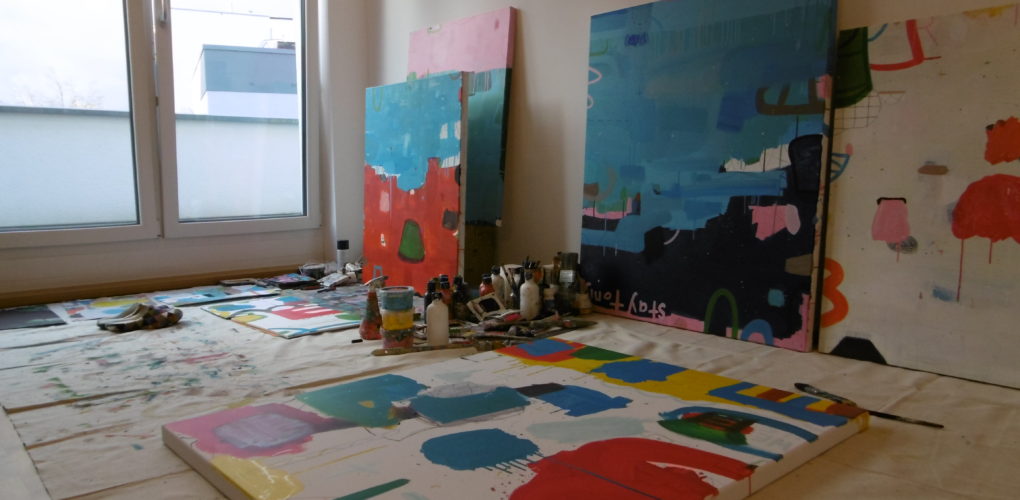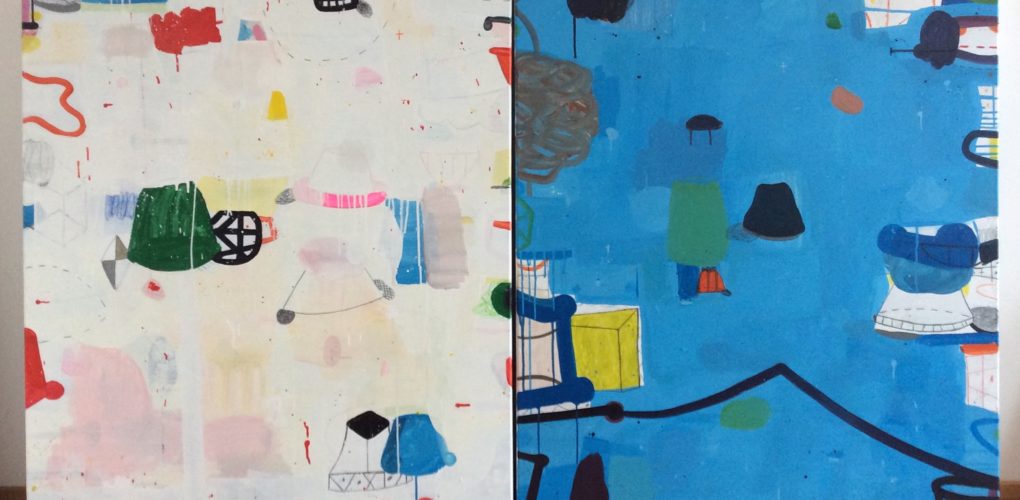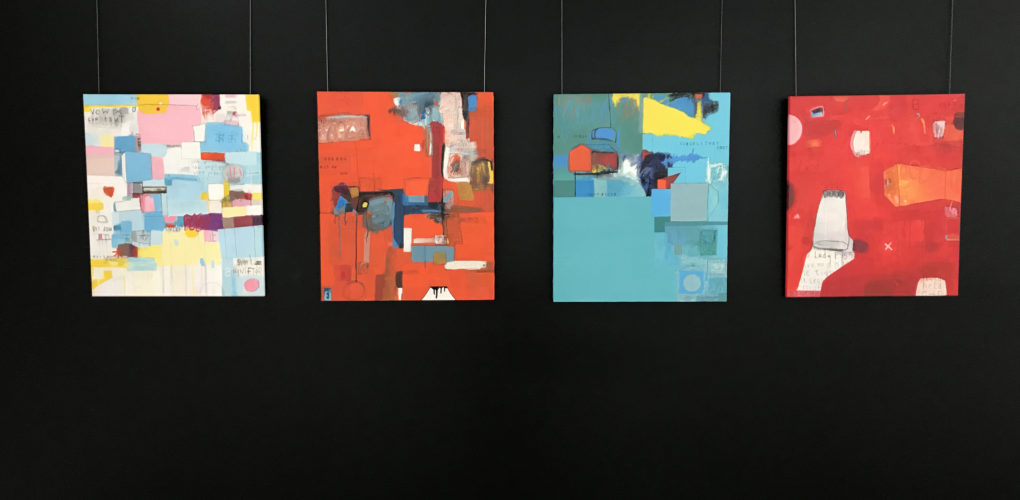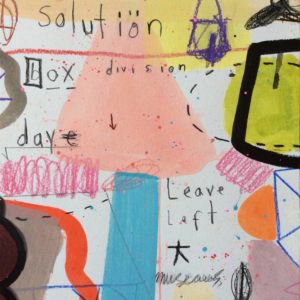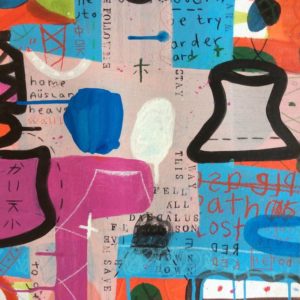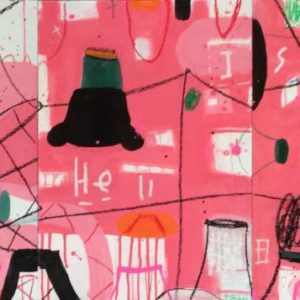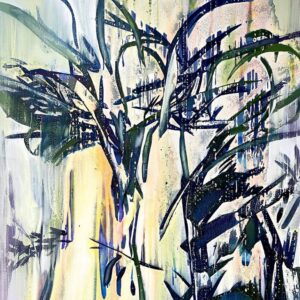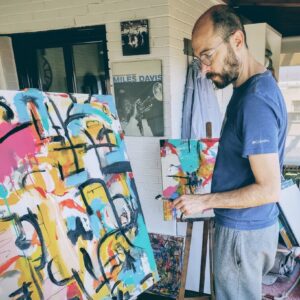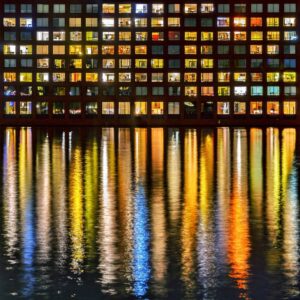One to Watch
 Andrew Weir Explores Symbols of Communication
Andrew Weir Explores Symbols of Communication
Andrew Weir’s work embodies the cross-cultural. Born in Scotland, he spent a decade living in Japan and now calls Germany home. His works are explorations of the emotional experience of moving from one culture to another, both visually and linguistically. His paintings are inspired by elements of abstract expressionism, Japanese calligraphy, and wabi-sabi, and he often incorporates words and symbols, exploring how these systems of communication evolve over time.
Andrew studied at Gray’s School of Art at the Robert Gordon University, Scotland and the Maastricht Academy of Fine Arts, Netherlands. He has exhibited his works at numerous shows, including the National Art Center Tokyo, the Royal Scottish Academy, Edinburgh, and the Royal Glasgow Institute of the Fine Arts, and is having his first solo exhibition, titled “Agnostic Forms,” in Berlin this month.
What are the major themes you pursue in your work?
Having lived in several vastly different places, I am interested in exploring the emotional experience of moving from one culture to another. I am also fascinated by the relationship between symbols (e.g. language and mythological symbolism) and the incredible depth and variety of meaning they contain. These symbols shape our perceptions of the world; consequently, they subconsciously affect how and why we act.
Moreover, these communicative systems of symbols that we create, modify, and discard have an ephemeral nature. Individual words lose their original meanings and change. Whole languages are lost, discovered, and created. Symbols which were once taboo or progressive somehow become pedestrian and mundane.
These tools (symbols) which we use are pathways to understanding our past, present, and where we want to be as individuals and as societies in the future.
How did you first get interested in your medium, and what draws you to it specifically?
Working with acrylics compliments the way in which I approach my work. They dry quickly, which forces me to react intuitively and with speed to what is occurring in front of me. This provides an essential sense of urgency and prevents me from thinking too much about what I am doing. This technique also allows me to build up several layers which can show through the surface revealing forms and symbols to varying degrees.
Alternately, using crayons and pastels appeals to me as these are the first drawing implements we give our children and when used can have an energetic aesthetic beauty.
How has your style and practice changed over the years?
The process has always been of more interest to me than the outcome.
When at art school, I would produce work using screen prints combined with collage, and then work over the surface with oil paints and/or enamel. This was a very deliberate process. At that time, I was still working in a style one might call abstract expressionism.
Although my current work may be aesthetically (and materially) very different from my older work, I can see continuity and a clear development in my process.
Can you walk us through your process? Do you begin with a sketch, or do you just jump in? How long do you spend on one work? How do you know when it is finished?
I begin by putting marks on the surface using crayons, pastels, or pencils. These marks / symbols & letters will often not be seen once the painting is completed. They are simply a means to reach a point where I feel ready to begin applying paint.
I tend to work on at least two canvases, in addition to smaller works on paper, simultaneously. Each one will have a different color palette.
The painting process is one of continually adding and removing marks and layers until a form appears which is then developed upon. Once a painting has reached a point where it is possibly finished, I avoid looking at it for at least twenty-four hours. Then I return it to the studio for a few days while working on other paintings. I feel comfortable showing a painting when any further adjustments made would take something away from the work rather than add to it.
Who are some of your favorite artists, and why?
Antoni Tàpies – Not only do I really like his work but it was through reading about him (at university) that I first heard of Okakura Kakuzō, specifically, The Book of Tea. This book (essay) introduced me to some of the Japanese philosophical traditions that have become integral to my working process, for example, Wabi–sabi (侘寂)
David Shrigley – His mordant work makes me laugh.
Cy Twombly – He made and continues to make people say “A Child could do that!” in an attempt to disparage his wonderful work.
What was the best advice given to you as an artist?
When my professor in final year of university (days before the Graduate’s Degree show) said “Degrees are like packets of crisps, everyone has one, it’s what you do with it that is important.”

